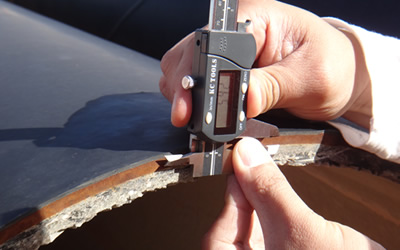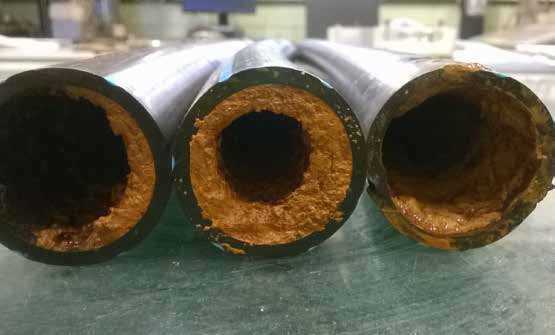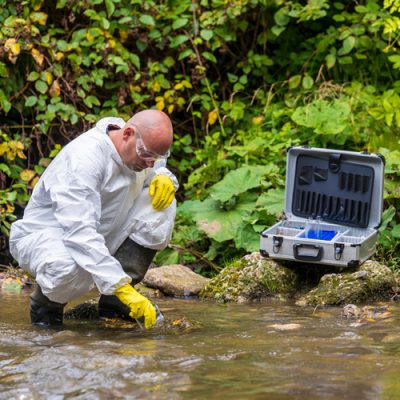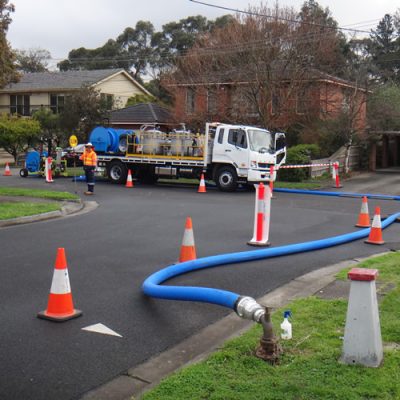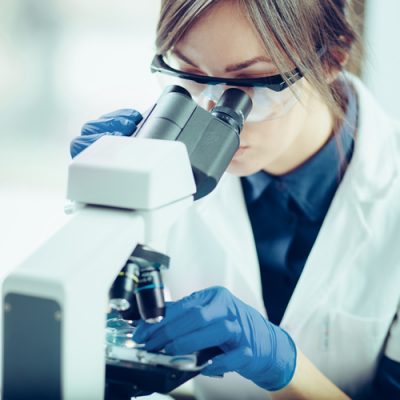Water quality is affected by a wide range of natural and human influences. Natural influences are geological, hydrological and climatic, human influences can be associated with industrial and chemical activities, development and infiltration just to name a few. All can affect the quality and quantity of water available. Developing a solid water quality strategy requires detailed understanding of water chemistry, pipeline materials, potential for corrosion and leaks in the network, as well as investigation and assessment of treated and clean water quality and the balancing of water supply.
Developing a solid water quality strategy requires detailed understanding of water chemistry, pipeline materials, potential for corrosion and leaks in the network, as well as investigation and assessment of treated and clean water quality and the balancing of water supply. Confirming effects of pipelines on water quality and existence of the health risks plays an important role in controlling water quality. There is a diversity of approaches and our goal is to deliver sustainable solutions that integrate seamlessly within the customers current infrastructure.
We offer a range of technologies to prevent contamination, protect the pipeline and assist with water quality including
- Cleaning water mains with no loss of water
- Cleaning and recycling high density mains flushing
- Environmental chemistry conditioning and monitoring
- Underwater inspection of pipelines, dams and tanks
- Microbial DNA analysis of water and biofilm corrosion in pipelines
- Robotic underwater inspection of reservoirs, dams and cleaning to remove sludge and deposits
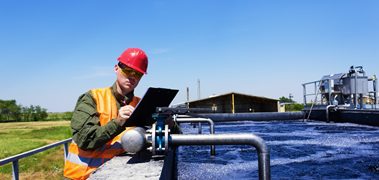
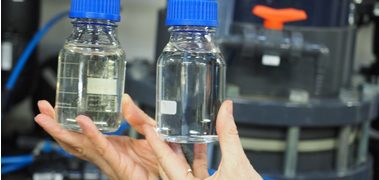
NO-DES is an innovative and effective way of cleaning water mains with virtually no loss of water. This technology delivers a cost effective solution to traditional methods, increasing customer confidence, reducing operational costs and conserving water and environmental discharge.
Traditionally, water pipes have been flushed by opening fire hydrants and letting water discharge into the street. The NO-DES system saves this water by attaching to two fire hydrants and creating a temporary above ground loop through which the water is circulated, cleaned and returned to the pipe. The NO-DES system flushes the water between the hydrants at a velocity that removes sediment and biofilms by passing the water through a fine 24 chamber filtration system. Water is continually circulated through the filters until the water is clean and turbidity targets are achieved, chlorine can also be added during this process if required. Ideal for newly installed water mains (chlorinating, flushing, testing) and cleaning water mains after leak repairs and contamination events. Can also be used as a booster or transfer pump to augment supplies.
- No environmental discharge
- High velocity, controlled flow
- Requires no shutdown of the water supply
- Self contained, no loss of water during process
- Portable and can be set up within minutes of arrival on site.
- NO-DES does not require the pipe to be depressurised
- Minimal disturbance to customers supply (unlike conventional flushing)
For more information visit: no-des.com.au
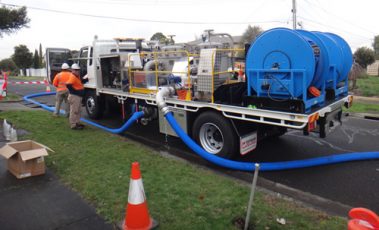
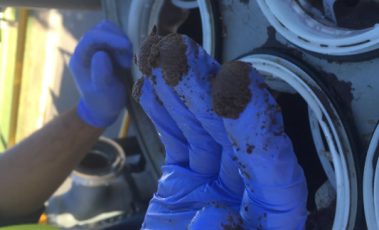
Many types of bacteria cannot be cultured and traditional tests cannot detect all forms of bacteria. Microbes within the water distribution network can cause fouling, increased corrosion rates and health issues. In addition to increased maintenance costs, advanced stages of pipeline corrosion may trigger structural damage and lead to increased operational costs and environmental damage. Microbial analysis of water and biofilm can determine the microbial induced corrosion rate within a pipeline. From a sample we can extract the DNA to determine the whole microbial population, we then allocate each microbe to a role and can calculate the microbial corrosion rate.
Our initial filed studies demonstrated that various types of biodeterioration associated bacteria can be found in raw water pipes, ground water pipes, potable water pipes (inside and outside) and flushed material from potable water pipes. DNA analysis identified diverse functional groups of microorganisms with the potential to cause extensive damage to cement and metal pipe walls, that can cause pipe bursts and failures. Sewer pipelines experience a wide range of pressure cycles due to the pump stations turning on and off, this combined with the hydrogen sulphide can result in pipeline failure. Understanding the potential production rate of hydrogen sulphide and the concentration present will help determine the high risk locations and the potential corrosion rates that are occurring.
As both internal and external pipe surfaces are exposed to non-sterile environments, our pipes are being degraded from both inside and outside but not necessarily by the same microbes or chemical interactions.
For more information visit: ds-insight.com
